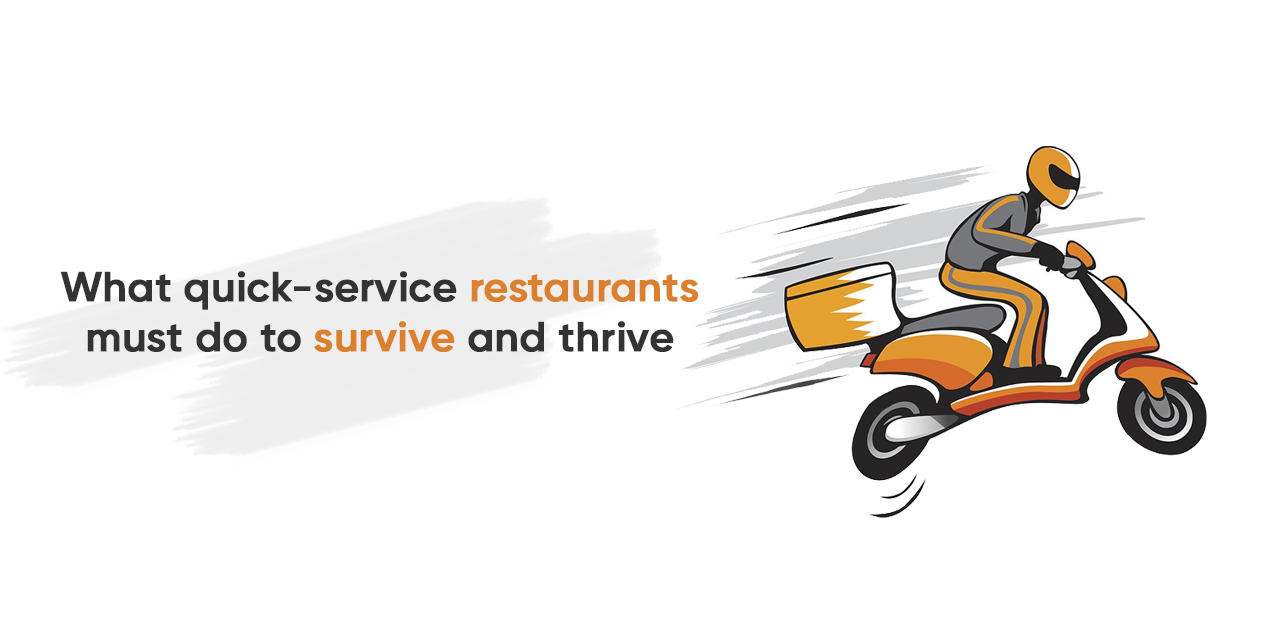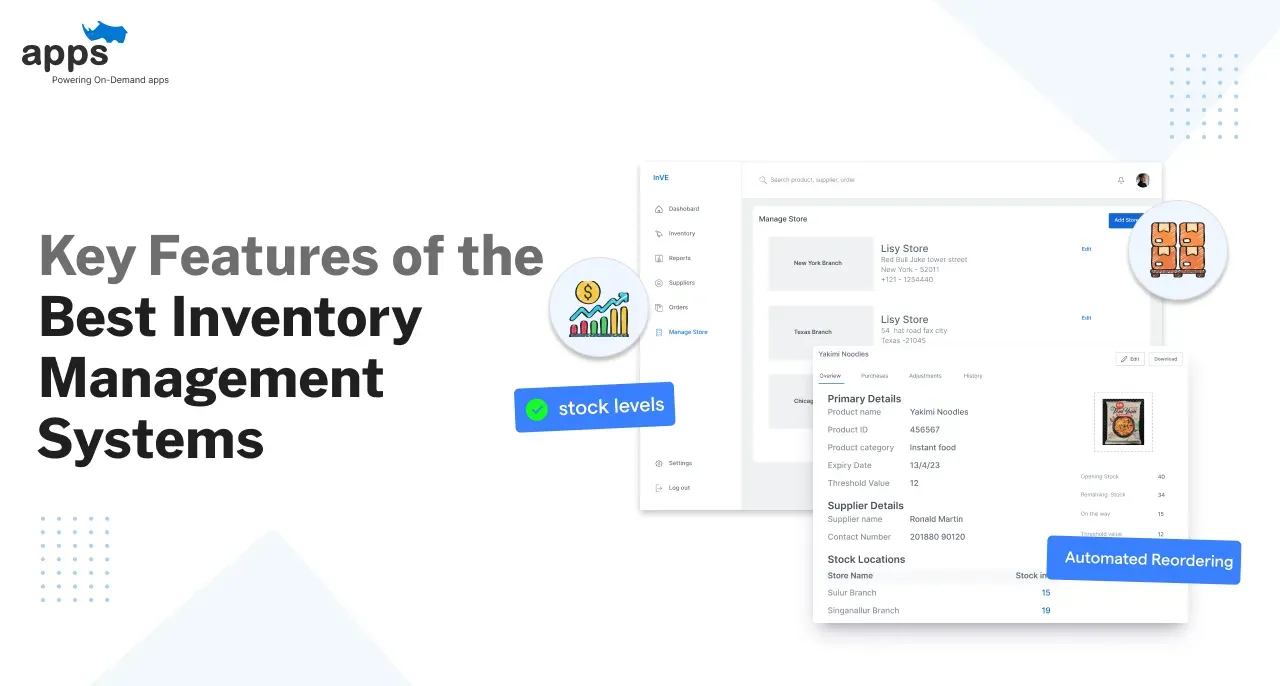How reliable fast food delivery apps are?

It's been a quarter-century since eCommerce was born. Still, while the internet quickly transformed how we shop for everything else, online ordering and delivery of pre-made meals have only recently taken off. Since 2014, digital ordering and delivery facilitated by Grubhub, Uber Eats, and DoorDash have grown three times faster than dine-in traffic, and that growth shows no signs of slowing.
The majority of that growth will come from digital orders, expected to grow at a compound annual rate of more than 22% through 2023. These kinds of figures have sparked massive investment in food delivery service businesses and a flood of new startups.
Challenges faced by food delivery apps.
Food delivery apps have enabled nearly every quick-service restaurant to enter the delivery channel previously dominated by pizza chains. One might think that the rise of delivery apps would be unambiguously beneficial to the restaurant industry. The reality is far more complicated, and restaurants that work with delivery services face some significant challenges. We have tried to explain how reliable food delivery apps are through the blog.
Some significant challenges faced by the Food delivery services

High Fees for delivery services
Just as delivery services have benefited from a honeymoon period in terms of seed investors, restaurateurs who see the promise of delivery apps in reaching new consumers have benefited from the same. There is only one issue here, and that is price.
Some third-party delivery services charge restaurants up to 30% of each customer order. While not every service charges the same, the reality is that high delivery company fees will increasingly become a barrier for restaurants.
While overall expense ratios may not match up on an apples-to-apples basis for any given one (or hundreds) of delivery transactions, keep in mind that the typical restaurant financial model operates on razor-thin margins. Expenses differ for fast food, casual dining, and upscale restaurants. Still, the average restaurant budget allocates 30% of gross sales to the cost of ingredients, 30% to the price of labor, and the remainder to rent, insurance, supplies, utilities, and profit. What's the point of having a delivery service if restaurants can't directly profit from the increased sales volume?
Adapting space to accommodate delivery services
Customers increasingly choose delivery over dine-in, so landlords and restaurants must reconsider and redesign their space. Delivery services mustn't obstruct in-store or drive-thru trade (which will remain more profitable simply due to the issue of delivery company fees). Dedicated delivery parking and pick-up areas (or even dedicated entryways) are just the tip of the iceberg. Site selection, leasing, and marketing strategies may all be influenced.
Brand awareness and competitive differentiators are being diluted
Delivery app services promise to potentially introduce restaurants or chains to consumers unfamiliar with the brand. The difficulty here is that it is a two-edged sword. Delivery companies make it more difficult for restaurants to build direct relationships with customers and ensure consistent food quality by putting themselves between restaurants and their customers.
Morgan Stanley analysts stated in a recent insight report that "losing ownership of their customers is a restaurant brand's worst fear, ceding pricing power and customer data." However, in this scenario, restaurants become reliant on the incremental volume provided by online delivery, making it difficult to walk away."
Getting delivery is more convenient than dining out with the family, according to 63% of respondents. And, right or wrong, the condition of the food when it reaches the consumer reflects on both the restaurant and the delivery service. In the restaurant industry, consistency is king. If the food arrived cold because the driver was late or delivered the incorrect order, the restaurant's image might suffer.
Customers who have never utilized a third-party restaurant delivery service think that speedy delivery (31%), restaurant selection (28%), low order minimums (27%), and first-use coupons (26%), among other factors, would entice them to do so.
What quick-service restaurants must do to survive and thrive

Delivery apps are here to stay, but there are ways for restaurants to avoid delivery fees while still maintaining control over customer relationships and food quality. According to the Wall Street Journal, some of the country's largest restaurant operators use their clout to negotiate lower fees. Some are also considering developing their delivery capabilities to avoid the costs entirely. Restaurants are monetizing convenience to offset delivery fees by charging service fees in addition to delivery fees or forcing delivery customers to order from higher-priced menus.
We believe that further market consolidation will occur, eventually reducing restaurant costs and alleviating many of these concerns. At the same time, new delivery startups are approaching the fee structure problem in novel ways, which could benefit quick-service restaurants. To thrive in this changing landscape, restaurants that partner with delivery apps must focus on consistent service and quality, efficient restaurant layouts, adequate infrastructure, and seamless technology.
Whatever approach quick-service restaurants take to the food delivery revolution, one thing is sure: it is here to stay. Convenience and variety will never go out of fashion. And food delivery apps have grown into their behemoths. Grubhub, DoorDash, Postmates, and Uber Eats control 95% of the US food delivery market, and their combined valuation now exceeds Yum! Brands, is the parent company of the original e-commerce food pioneer Pizza Hut. As these companies' resources and market penetration grow, it will be more difficult for the restaurant industry to influence them. Quick-service restaurants must remain innovative and adaptable to thrive in this new business environment.
How reliable are fast food delivery apps?
5 Reasons to rely on Fast Food Delivery Apps
1. Check sizes have been increased
Compared to dine-in orders, online and delivery orders result in a 20% increase in check size for restaurants.
2. Make up for the decreased foot traffic
Most states and provinces have begun some level of restaurant reopening, but they face fairly strict restrictions that limit the number of guests allowed to dine in at any given time. Offering delivery can help offset the income lost from closed or half-empty dining rooms while also reaching new customers who are either sheltering in place or are still hesitant to go out, even as restrictions ease.
3. They are commercially more viable and reliable
Customers may request that your food be served in the comfort of their own homes at times. You can cater to a broader range of customers if you offer delivery.
4. They can be relied upon for low overhead charges
If delivery becomes the majority of your business or you transition to a ghost kitchen model, you may want to consider downsizing your space to save on rent or hiring front-of-house staff to save on labor.
5. New customer exposure
Delivery can help you reach new customers beyond the regulars, locals, and other customers from the surrounding neighborhoods, which is especially important when restaurants are operating at reduced capacity or people are still hesitant to eat out. Furthermore, it is essential in urban areas where potential customers may not have access to a car. Third-party apps, which also serve as marketing platforms, can help to expand this reach. When you sign up for Caviar, DoorDash, or Ritual, you put your restaurant in front of millions of people. You'll get your menu in front of diners who aren't within walking distance – hello, new customers!
Why not rely on fast food delivery apps?
1. Less control
Whether you use an in-house or third-party fleet, you have less control over a customer's delivery experience. Customers may negatively impression your restaurant due to traffic, road conditions, or a wrong turn – delays that have nothing to do with you or your food. If food arrives cold or poorly presented after the trip, it may harm a customer's opinion of your restaurant. You also have fewer opportunities to improve a bad experience because you aren't present when customers eat your food.
2. More work will be required to put the plan into action
If you decide to handle deliveries in-house, you will have to deal with the hassle of finding new employees and vehicles while developing a process for a successful service.
3. Profit margins are shrinking
If you have your delivery fleet, you must pay for the drivers, their insurance, their gas, and so on. All of these expenses reduce your profit margin. There are additional costs if you use third-party delivery services. Even the best food delivery app companies will take a significant cut of each meal delivered, so you'll need a large volume of orders to make a real profit. Mulberry & Vine, a healthy fast-casual restaurant in New York, spend between 20% and 40% of its revenue per order on delivery and couriers. Yikes. Third-party delivery apps have been widely chastised for charging exorbitant fees before and during the pandemic. Fee caps have been implemented in some cities, but restaurant owners are still being assessed.
4. Additional points of contact
When working with a food delivery service, there will be more contact points between when the order is placed and when the food is delivered to the customer. And you won't be present to ensure that the driver adheres to the standards you've established for your restaurant. Customers want to feel comfortable ordering from your restaurant, and any extra points of contact may make them feel less safe.
Fast Food Delivery Apps: Conclusion
Food delivery is a long-term investment, so it's critical to do your homework before deciding if it's suitable and reliable for your company. One thing is sure: if it wasn't already, the food delivery trend is here to stay and to rely on.
However, it has only grown in recent years and will likely continue to be a significant revenue source as dining rooms operate at reduced capacity. Deciding to open a restaurant with a delivery service should be based on your company's needs, resources, venue type, customer base, and location. For more details connect with AppsRhino.
Table of Contents





